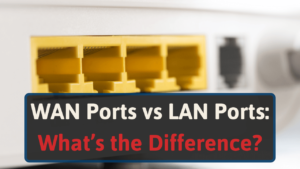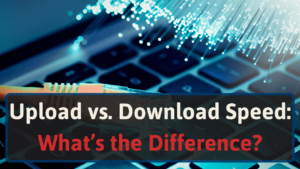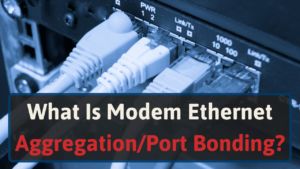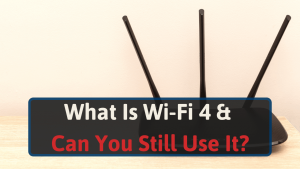Pick fixed wireless access (FWA) if 5G home internet is available. And, so long as there aren’t trees and buildings between your home’s transmitter and the ISP’s. Because 5G FWA offers much higher browsing speeds and doesn’t cost much.
Keep reading to learn when DSL is the more viable option.
I want to know whether fixed wireless access or DSL internet reigns superior. I’ve compared both connection options in various categories.
Once you finish this guide, you’ll know the following:
- The winner
- Both options compared in various categories
- What digital service line internet is & provider options
- What fixed wireless access internet is & provider options
- Other internet options
Keep reading and find your ideal connection type.
Should You Get DSL or Fixed Wireless Access?
Choose 5G fixed wireless internet access plans for the following reasons:
- More coverage
- Higher download & upload speeds
- * Lower latency when accounting for DSL attenuation
- No additional infrastructure required
* DSL attenuation is when your internet signal’s quality degrades the further you live from your internet service provider. It leads to slower internet and higher latency.
These perks go out the window if obstacles lie between your home and the provider’s wireless tower. For instance, if you live in the sticks, all those trees around your home will interfere with or block your internet signal.
Living close to your ISP will give you the highest average speeds and the lowest latency with DSL. From what I’ve seen, that isn’t common. Plus, many companies have begun phasing out their DSL products.
Making it a less-than-ideal option for homes.
4G LTE home internet usually has lower download speeds and higher latency. But offers much more availability.
DSL vs. Fixed Wireless Access Internet
Let’s compare cable and fiber optic internet:
| DSL | Fixed Wireless Access | |
| Best For | Saving a bit of money & general browsing | Backup internet, watching videos, & general browsing |
| Max. Speed | 120 Mbps | 1.0 Gbps |
| Avg. Latency | 34 ms | 40 ms |
| Avg. Monthly Fee | $51/mo. | $50/mo. |
| Equipment Needed | DSL modem & router | Network gateway |
| Installation | Self-installation possible | Self-installed |
Before proceeding, I found the average latency by pooling latencies from each provider’s products. Then finding the median.
DSL vs. Fixed Wireless Access: Latency
Fixed wireless access may offer more consistent lower latency rates than DSL. Because many DSL users will have a weaker connection when they live further from their ISP. And that degraded signal will lead to lower latency.
However:
Fixed wireless access customers may face lower latency during bad weather conditions. Or if objects like trees or buildings sit between their receiving antenna and the FWA tower.
Both connection types will handle video calls and online gaming well. Those who use 5G home internet without obstructions interfering with their signal will get the lowest latency.
DSL vs. Fixed Wireless Access: Speed
FWA internet plans offer up to 1.0 Gbps speeds. However, many popular providers will actually offer up to 200 Mbps. DSL offers up to 120 Mbps.
Both connection types could handle most online tasks. So long as they don’t require high upload speeds. Like smart device management, security cameras, and file uploads.
Since providers from both internet types don’t offer symmetric internet. Symmetric means equal download and upload speeds.
Circling back to download speeds.
200 Mbps would allow up to 8 people to stream 4K video simultaneously. And 120 Mbps would allow up to 4 people to stream the same resolution [1].
Digital service line internet suffers from attenuation. This means the further you live from your ISP, the slower the internet. FWA isn’t perfect, either. Because if trees (or other objects) sit between your home’s receiver, you’ll have internet interruptions or slowdowns.
DSL vs. Fixed Wireless Access: Availability
Here’s an availability comparison between cable and fiber internet [2]:
- DSL:
- 0.2/0.2 Mbps: 57.71%
- 10/1.0 Mbps: 39.59%
- 25/3.0 Mbps: 22.82%
- 100/20 Mbps: 4.68%
- Fixed wireless access:
- 10/1.0 Mbps: 69.54%
- 25/3.0 Mbps: 67.18%
- 100/20 Mbps: 30%
- 250/25 Mbps: 11.92%
- 1,000/100 Mbps: 9.76%
Fixed wireless access provides more high- and low-speed coverage around the U.S. than DSL internet.
DSL vs. Fixed Wireless Access: Costs, Equipment, & Installation
On average, fixed wireless access internet costs less than DSL. FWA doesn’t come with professional installation fees. But they require you to use their modem.
As it’s not possible to find third-party modems fixed wireless providers will support. Many providers offer these device rentals for free, though.
DSL vs. Fixed Wireless Access: Reliability
DSL offers more reliability than fixed wireless access. Since it doesn’t require a direct line of sight between your home’s receiving antenna and the FWA tower. If, for instance, a tree stood between your provider, you’d have reduced quality in your connection.
Or no connection at all.
Fixed wireless providers offer remedies like repeater sites to get around obstacles. However, horrible weather conditions also have some potential to weaken your connectivity.
DSL vs. Fixed Wireless Access: For Gaming
I mentioned in the Latency section that both connection types offer acceptable latency for online gaming. Except when DSL connections suffer from attenuation. Or FWA connections have obstacles interfering with their signal.
Most DSL and fixed wireless access plans don’t enforce hard or soft data caps. You could download everything from a massive Steam library without worrying about data overage fees or throttled speeds.
Both internet options provide plenty of speed to accommodate multitasking while you game online. For instance, if you want to watch Asmongold on Twitch on one monitor and grind in Black Desert Online on another.
Depending on the DSL speeds, you should consider lowering the resolution of whatever you’re watching on your second monitor. Because plans with lower speeds will cause you to waste more bandwidth.
And livestreaming. You’d want at least 7.5 Mbps of upstream bandwidth to stream 720p HD video on Twitch [3].
Not the best idea to do this with 4.0 Mbps upload speeds LTE home internet plans offer. 5G and many DSL plans should accommodate these demands, though.
DSL vs. Fixed Wireless Access: For Business
DSL and fixed wireless access aren’t the best for any business due to having lower upload speeds. Meaning businesses shouldn’t rely on either connection to run security cameras, VoIP software, and quick file uploads.
Microwave internet is the exception. It delivers upload speeds of up to 10 Gbps. Comparable to fiber. But it doesn’t have much availability.
I digress:
Both connection types COULD handle running a security camera or 2. But at a small scale. DSL can accommodate online tasks at a 1- or 2-person clinic that uses the internet for browsing and orders.
Fixed wireless access internet could handle file downloads and more people using the internet simultaneously. It’s a better internet type to use as a backup to a primary cable or fiber connection.
DSL vs. Fixed Wireless Access: For Video Streaming
In most scenarios, fixed wireless access is better for watching videos online than DSL. Here are my reasons:
- Doesn’t suffer from attenuation
- No data caps
- Much higher download speeds: more devices can stream high-resolution video
- Many FWA providers offer free trials or access to streaming services
The last point could save you money on streaming services. T-Mobile offers Paramount+ free for a year. If your house likes watching the—Halo series—and whatever else Paramount+ offers, y’all can save money.
If physical objects like trees or hills interfere with the frequencies between your home and ISP antenna, you’ll encounter internet issues.
Which makes DSL a more reliable choice. So long as you don’t live far from your provider. Again, attenuation is a huge issue with DSL.
Before proceeding, refer to this chart for reference:
| Task | Download Speed |
| Netflix | 3.0 Mbps: 720p 5.0 Mbps: 1080p 25 Mbps: 4K |
| Disney+ | 5.0 Mbps: 1080p 25 Mbps: 4K |
| Hulu | 3.0 Mbps: Hulu’s Streaming Library 8.0 Mbps: livestreaming television16 Mbps: 4K |
| Peacock TV | 3.0 Mbps: 1080p |
| YouTube | 2.5 Mbps: 720p 5.0 Mbps: 1080p 20 Mbps: 4K |
Most DSL and fixed wireless access plans could support streaming 720p video on 3 or more devices simultaneously. The LOW speeds many DSL plans offer makes even streaming 1080p FHD video on Netflix impossible.
I’ll compare providers in a bit. But first—
What Is Fixed Wireless Access Internet?
Fixed wireless access (FWA) internet relies on ISPs using radio links between a customer’s home transmitter and their antenna. Homes must remain within 10 miles of the provider’s antenna to receive signal.
And they can’t have obstructions like trees, hills, and buildings blocking said signals. Otherwise, customers will encounter internet interruptions and experience downtime.
FWA providers may offer one of the following frequencies:
- Microwave: high-capacity radio links
- 3G: 3G signals
- 4G LTE: mid-band spectrum frequencies
- 5G: mid-band or millimeter waves
Let’s explore the pros and cons.
Pros & Cons of Fixed Wireless Access Internet
Here’s where fixed wireless access scored the most points:
- Download speeds can accommodate most online tasks
- Plenty of availability
- Ideal backup internet connection
- Affordable
- No data cap (for the most part)
FWA doesn’t do well in these areas:
- Can experience interference because of trees, buildings, and bad weather
- Not many LTE home options available
- Usually has low upload speeds
DSL makes up for fixed wireless access’ weaknesses, since physical objects cannot interfere with its connectivity. However, attenuation can.
Most Popular Fixed Wireless Access Providers
Fixed wireless access providers include the following:
| Provider | * Starting Price | Speed | FWA Type | Data Cap |
| AT&T Fixed Wireless | $59.99/mo. | 25/1.0 Mbps | 4G LTE | 350 GB |
| Starry | $50/mo. | 200/100 Mbps | 5G | No |
| Rise Broadband | $35–$50/mo. | 25–50 Mbps (DL)4.0–5.0 Mbps (UL) | 4G LTE | 250–350 GB |
| Verizon 4G LTE Home | $50/mo. | 25–50 Mbps (DL)4.0 Mbps (UL) | 4G LTE | No |
| Verizon 5G Home | $50/mo. | 85–100 Mbps (DL)10–50 Mbps (UL) | 5G | No |
| T-Mobile 5G Home | $50/mo. | 33–182 Mbps (DL)6.0–23 Mbps (UL) | 5G | No |
* Does not include taxes and other fees. These will vary by region. Actual internet speed will vary by connectivity method (e.g., Wi-Fi vs. Ethernet) among other factors. Pricing already accounts for discounts when enabling automatic payments.
Verizon and T-Mobile 5G Home products both offer exceptional value. Deciding between them lies on whether you have Verizon or T-Mobile mobile plans. Bundling 5G home products with a mobile plan will shave 50% off your monthly bill.
Use a Verizon 5G cellular plan, and you’ll pay $25 monthly for their 5G Home service.
You’ll need to compare perks and network speeds if you have neither service. T-Mobile offers a 15-day trial and various freebies like a free year of Paramount+. Verizon includes a $50 gift card. Both services come with a free modem and don’t enforce data caps.
I can’t say the same for AT&T and Rise Broadband. Both enforce data caps.
Starry is also an excellent option if you don’t want Verizon or T-Mobile 5G. However, they’ll buy you out of your current contract for up to $200. If you’re fleeing an ISP with a higher early termination fee than that, I wouldn’t go for Starry.
But I would if you want higher maximum download and upload speeds.
Can’t get 5G in your area?
Verizon LTE Home appears the only viable non-niche option. It costs the same as their 5G product and has less speed. But it’s a good fill-in until your area supports 5G coverage.
What Is DSL Internet?
Digital service line/loop (DSL) internet provides internet connectivity to customers by transmitting signals through copper telephone lines. However, they use different frequencies than landlines. Meaning, customers could use both services simultaneously without interruptions.
Pros & Cons of DSL Internet
DSL is great because:
- No throttling
- Usually has no data cap
I wouldn’t go with DSL for the following reasons:
- Low upload speeds
- Slower speed & higher latency when you live further from the ISP
- Companies are phasing out support for DSL
Fixed wireless access internet doesn’t suffer from attenuation and horrendous upload speeds. Making it a better option in most scenarios. So long as you use 5G home internet.
Most Popular DSL Internet Providers
Check out the most popular DSL ISPs:
| Provider | * Starting Price | Max. Speed | # of States Serviced | Data Cap? |
| Frontier DSL | $28–$45/mo. | 6.0–45 Mbps | 25 (Availability Map) | No |
| AT&T DSL | $55–65/mo. | 0.8–500 Mbps (DL)0.4–100 Mbps (UL) | 21 (Availability Map) | 150 GB |
| CenturyLink | $50/mo. | 20–140 Mbps (DL)10–12 Mbps (UL) | 15 (Availability Map) | No |
| Kinetic by Windstream | $37/mo. | 100 Mbps | 18 | No |
* Does not include taxes and other fees. These will vary by region. Actual internet speed will vary by connectivity method (e.g., Wi-Fi vs. Ethernet) among other factors.
Cross AT&T and Frontier off the list. The former is phasing out its DSL services. And the latter doesn’t offer the highest speeds. It also makes it difficult to know what you’re getting.
And their customer support wasn’t the most helpful regarding “helpfulness.” They just kept asking me if I wanted fiber internet.
You probably wouldn’t want AT&T DSL anyway. Why would you subject yourself to 150 GB of data caps?
Whether you choose Kinetic or CenturyLink depends on your location. If they offer service in your area.
Other Internet Connection Types to Consider
Consider these other internet connection types before making a decision:
| Internet Type | Strengths | Weaknesses | Best For |
| Fixed Wireless | Decent download speeds & no data cap | Not many options for providers | Any online task that doesn’t require much upstream bandwidth |
| DSL | Decent download speeds | Attenuation | Watching 1080p videos |
| Fiber | Highest speeds available & reliable | Availability | Any online task |
| Cable | High download speeds & bundle(able) with TV products | Data caps & throttling | Watching videos (under 4K) & gaming online |
| Satellite | Availability | Slow, expensive, & costly data top-ups | Backup internet connection |
Here are the connection types to choose in order:
- Fiber: affordable, fast, & low latency
- 5G fixed wireless access: almost as fast as cable, but without a data cap
- Cable: download speeds are fine for homes with 4 or more
- DSL: download speeds are fine for homes with 3 or fewer
- 4G fixed wireless access: download speeds are fine for homes with 1 person
- Satellite: low speeds & high latency
Fiber internet has a much higher upload and download speed than any other connection type. And unlike DSL, fiber gives you equal upload and download speeds (symmetric speeds).
The glass fiber cables this connection type uses also make it immune to electromagnetic and radio interference. Making it more reliable. And these cables aren’t susceptible to attenuation.
A huge weakness DSL has.
5G internet’s the next best option. It offers high download speeds without data caps and other ridiculous(ness) that come with cable internet providers. However, ensure you’re in an area where obstacles like trees won’t interrupt your connection.
Cable’s your next best option. And if, for some reason, cable isn’t available, consider DSL. Or if you don’t want to deal with throttling or hard data caps.
Pick 4G FWA as backup internet or don’t want to get DSL and cable. So long as you don’t have many trees in your area, 4G home internet could provide decent download speeds at a competitive price.
Lastly, there’s satellite internet. If you have a money printing machine in your home, I’d recommend picking Starlink. They offer the lowest average latency, the highest download speeds, and the most data.
Otherwise, you won’t get the most value from HughesNet and Viasat.
FAQs: DSL & Fixed Wireless Access
Keep reading to find commonly asked questions about fixed wireless access and DSL internet.
Is Fixed Wireless Access the Same as DSL?
DSL and fixed wireless access are different due to the way they deliver internet. The former uses copper telephone cables. The latter uses wireless frequencies.
Is DSL Wireless Internet?
DSL is wired internet.
Conclusion
It’s difficult to recommend DSL internet over fixed wireless access. The latter offers much better pricing, higher upload speeds, and lower latency (sometimes). But all those benefits vanish when there’s a tree or another obstacle between your home and the ISP’s transmitter.
If you choose fixed wireless access, see if there’s any way to check whether you’ll encounter these obstacles.
Don’t like either connection type? Consider other options. We’ve reviewed many internet providers. Check them out and see who’d work best for your home.






